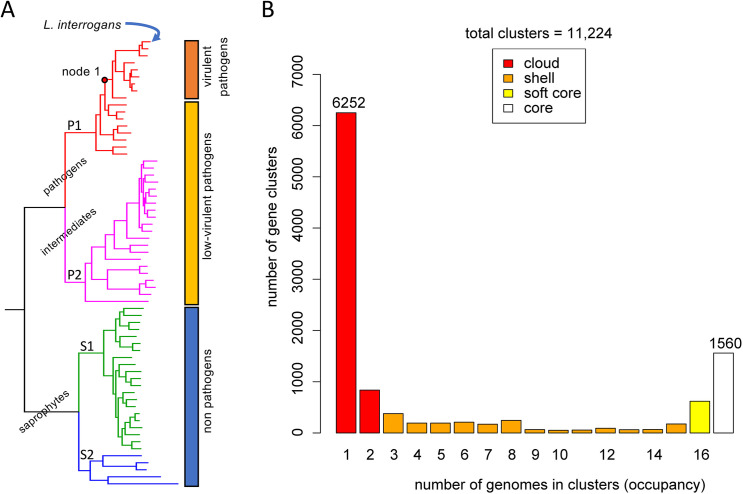Fig 2. Massive species diversity.
(A) Phylogenetic tree showing the relatedness of the 64 Leptospira species. Leptospira species are clustered as non-pathogens, low-virulent pathogens, and virulent pathogens according to their virulence status in animal models, prevalence in severe infections, and presence of virulence factors. Node 1 indicates the node from which descend pathogenic species are most frequently involved in human disease. (B) Distribution of gene clusters in the P1 clade revealing an open pan-genome with a relatively high number of gene clusters found only in a single species. Adapted from Vincent and colleagues [5].

